USAAF WWII Air Bases
Just where did those USAAF chaps hang out in Norfolk during WWII? Well, all over the place as it turns out. Many USAAF Squadrons deployed throughout Norfolk and some of the airfields remained in USAAF hands after the WWII ended and still to this day.
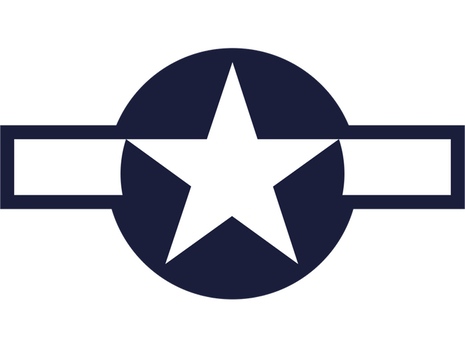
If you were to fly into Norwich International Airport today there is little to remind you, other than a few contemporary buildings, of its role between 1941-45, when it was just one of many bases occupied by the United States Army Air force (USAAF).
Between 1942 and 1945 there would have been, at any given moment in time, some 50,000, or so, personnel serving on the 18 air bases, occupied by the USAAF, within the county of Norfolk.
This so-called “friendly invasion” must have been a considerable shock to the local populace and there was, undoubtedly, some initial suspicion towards the ‘invaders’ who not only spoke a strange form of English, but also had a liking for such then unknowns as peanut butter, something called Coca-Cola and an inclination towards chewing gum all the time, or so it seemed.
So let’s return to the many, wartime USAAF bases to be found in Norfolk during wartime. To visit them all will require us to zig-zag, back and forth across the county, so perhaps the easiest way to do this is to take them in alphabetical order.
Attlebridge Airfield
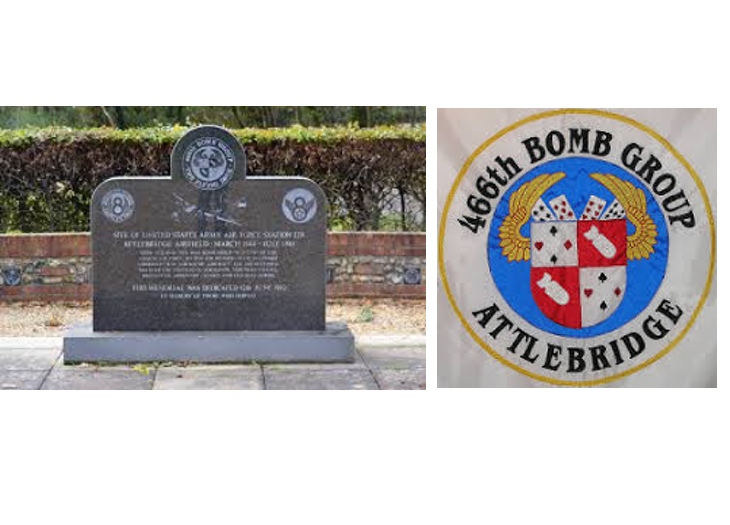 You’ll only need to take a fairly short drive to Attlebridge, (AF Station 120), near Weston Longville to find where the old airbase once was. There are some recognisable remains of it having once existed, but much of the land is now in the ownership of turkey producers Bernard Matthews. Between March 1944 and July 1945 it was home to the 466th Bomb Group, which flew a total of 231 combat missions, comprising 5,693 sorties during which nearly 13,000 tons at bombs were dropped.
You’ll only need to take a fairly short drive to Attlebridge, (AF Station 120), near Weston Longville to find where the old airbase once was. There are some recognisable remains of it having once existed, but much of the land is now in the ownership of turkey producers Bernard Matthews. Between March 1944 and July 1945 it was home to the 466th Bomb Group, which flew a total of 231 combat missions, comprising 5,693 sorties during which nearly 13,000 tons at bombs were dropped.
Bodney Airfield
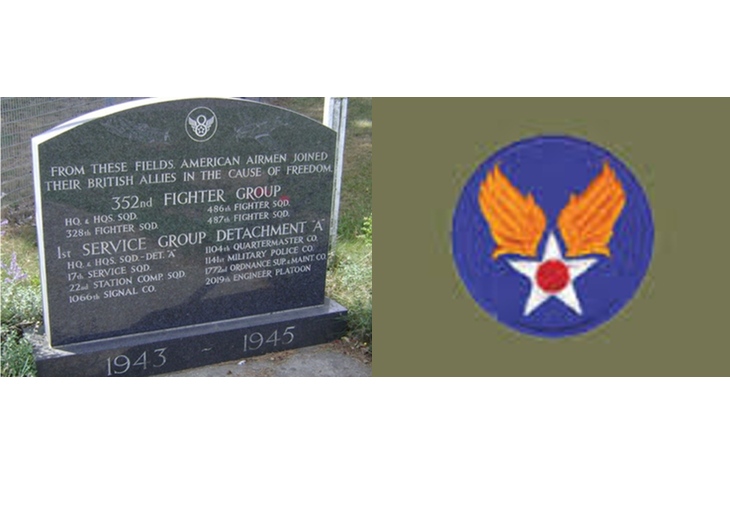
Our next port-of-call is Bodney Airfield, situated just over 4 miles to the west of the town of Watton and which became the home of the 352nd Fighter Group in July 1943. During WWII the Group flew some 420 missions, involving them in 59,387 operational combat hours.
They destroyed no less than 776 enemy aircraft and had proudly boosted a total of 29 aerial aces. The old base is now mainly agricultural land, but part of it is a British Army Training Area. However, a few of the wartime buildings have survived including the old control tower.
So on to the third of our former, wartime airfields.
Deopham Green Airfield
Only a couple of miles north of the market town of Attleborough is the old USAAF base of Deopham Green, where the 452nd Bomb Group made its home in February 1944.
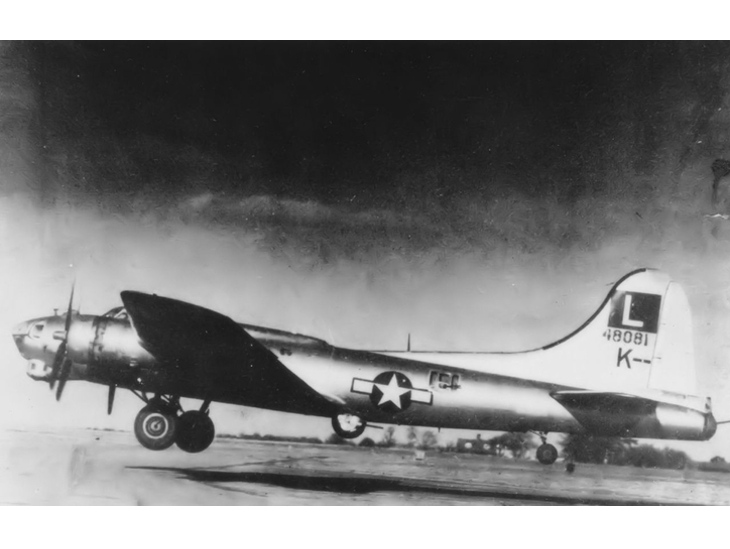
It had a 2,000 yards length of main runway with two 1,400 yards auxiliary runways. There was, of course, the usual perimeter track and fifty-one hardstands. The two hangers were located to the north and to the south-west and was home to 2,900 service personnel.
East Rentham Airfield
Our journey continues and, as we drive south to just six miles north east of Thetford, we come across the site of the old East Wretham airfield, which hosted the 359th Fighter Group of the USAAF between October 1943 and November 1945. During that period the Group flew 346 missions during which 106 aircraft were lost in action. On the other side of the ledger, the 359th destroyed a total of 351 enemy aircraft, 253 in air and a further 98 on the ground.
The former base is now, for the most part, of the British Army’s, extensive Stanford Practical Training Area (STANTA)
Fersfield Airfield
We now move on to Fersfield, which lies only 16 miles to the south west of Norwich. The base was used, between July 1944 and January 1945, for the 388th Bombardment Group’s (Heavy) joint USAAF/USN project called ‘Aphrodite’.
*B24 Bomber
This project involved stripped-down and somewhat war-worn B-24 Liberator bombers being used in a very high-risk and dangerous way. Their pilots would take-off, using normal, manual techniques, and once on their way they would parachute to safety, leaving the bomber, which was now under the radio-control of an accompanying aircraft, to then fly to its appointed target in Europe.
Quite a few such missions were flown, but they were soon stopped after an aircraft, piloted by a Lt. Kennedy, exploded shortly after take-off, killing him. Lt. Joseph Kennedy Jnr. was the elder brother of the future President of the United States, John F. Kennedy. There are still a few reminders of the former base in the form of a few of the wartime buildings and the perimeter track, but in the main the site has today been returned to its pre-war use as agricultural land
Hardwick Airfield
To visit our sixth airbase we need to drive 12 miles south from Norwich, on the A140; we then head for the village of Topcroft, which is just 5 miles east of the main road. Just to the south of the village is the site of the old Hardwick airfield.
For only a couple of months, between September-November 1942, it was home to the 310th Bomb Group and its B-25 Mitchell medium bombers.
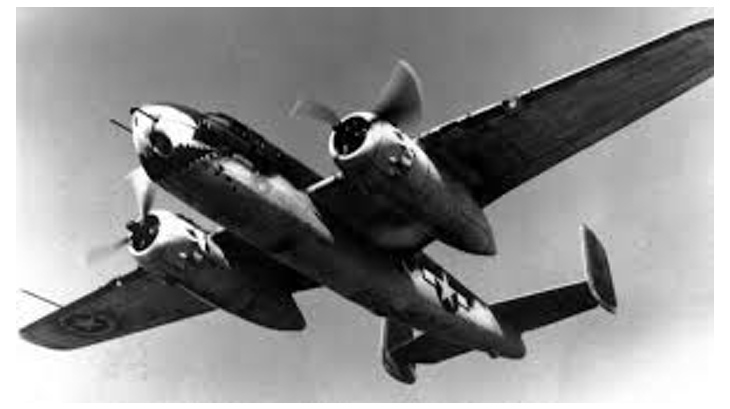
They only used Hardwick as a transhipment facility whilst on their way to Telergma, Algeria, to join the Twelfth Air Force. In February 1943 the B-24’s of the 93rd Bomb Group moved into the base and remained there until the end of the war, departing in June 1945 in June 1945.
During its existence the 93rd. Bomb Group flew 396 missions and 8,169 sorties, losing only 100 airplanes in combat. A 93rd Bomb Group Museum has been created within some of the remaining wartime Nissen huts, at nearby Airfield Farm. Dedicated to the memory of all those who served in this wartime, heavy bomber group.
It is open on the 3rd Sunday of each month, from May to October; 10am – 5pm.
Hethel Airfield
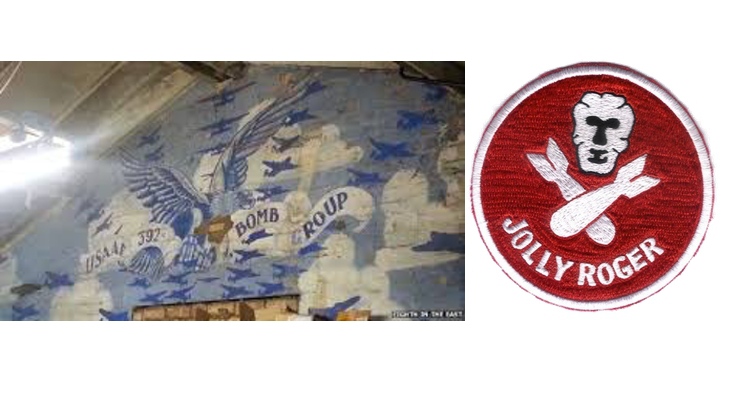
Heading back towards Norwich, travelling north along the A11, just short of Wymondham we follow the signs. to Hethel. During the war years it was home to three bomb groups – 320th, 310th and 389th. The 320th BG arrived on 12 September 1942 at a time when many of the airfield buildings were still not completed and was a medium bomber group of the USAAF 12th Air Force.
The group utilised Hethel as a staging and transit facility before they were deployed to Algeria on 2 December 1942. The next unit to occupy the base, during the spring of 1943, was the 310th Bombardment Group (Medium), which used the airfield as a staging area before deploying to French Morocco. Hethel was then, for a short period, used as a training airfield for B-24s from other 2nd Air Division Groups. With the completion of the base facilities it was handed over to the B-24’s of the 389th Bombardment Group (Heavy), which arrived on 11 June 1943 and was assigned to the 2nd Combat Bombardment Wing.
Today, when you visit Hethel you are likely to hear the sound of Lotus cars negotiating the test track, which utilizes part of the wartime runway. Lotus has been in residence at Hethel since 1966.
There is a memorial museum dedicated to the 389th BG at Potash Farm, Potash Lane, Hethel, NR14 8EY. It opens on the second Sunday of each month during April to October (10am-4pm).
Adjacent to the former airfield is Ketteringham Hall, now private property, which was the 2nd Air Division Headquarters, from December 1943 to June 1945.
Horsham St Faiths
Keeping the old airbases in alphabetical order, we now have to return to the outskirts of north Norwich to the Norwich International Airport. During the war years it was known as Horsham St. Faiths and was home to both American fighters and bombers.
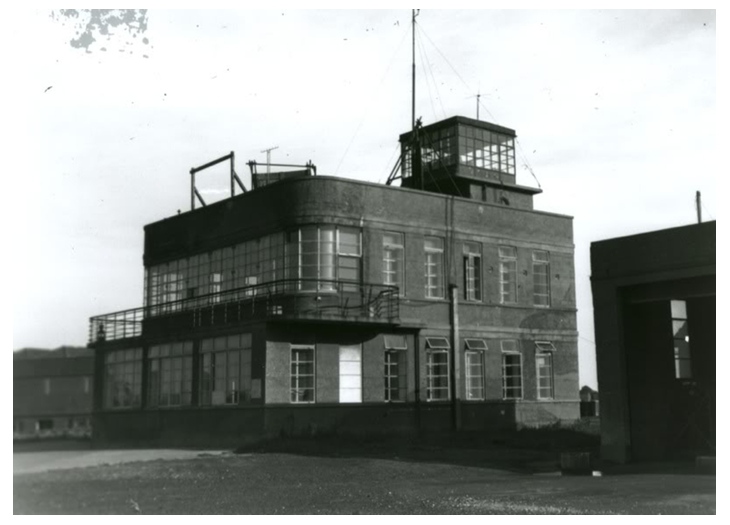
Between 4/10/42 and 11/11/42, it hosted the 319th Bomb Group (M), with its B-26 Marauder medium bombers. Between 5/4/43 and 8/7/43, the P-47 Thunderbolts of the 56th Fighter Group were in residence. From early in 1944 the base was home to the B-24 Liberator, heavy bombers of the 458th Bomb Group, of the USAAF 2nd Air Division, which flew its last mission from there on 25/4/45. On the northern perimeter of today’s airport you will find the Norwich Aviation Museum which has an extensive display of preserved, historic aircraft, with a display which features the presence of the 458th Bomb Group (H) during the war years.
North Pickenham
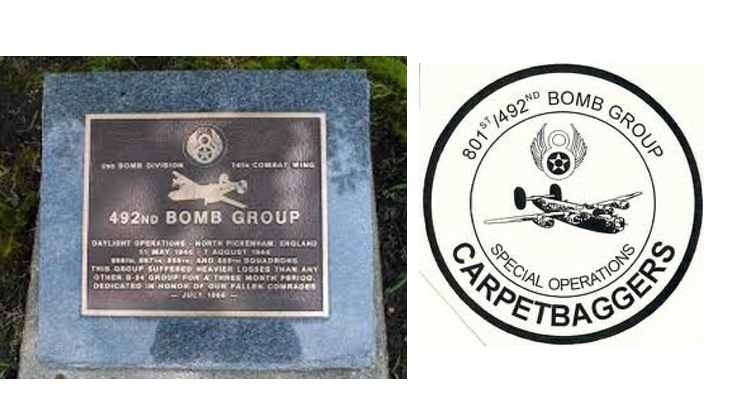
Back on the road we head west long the A47 to Swaffham, which is only a couple of miles from North Pickenham, one time home of the 492nd Bomb Group, which was one of the last groups to be deployed to the UK. It had a somewhat short life at North Pickenham it being disbanded in August 1944. Following a major explosion at Metfield, Norfolk airbase the B-24 Liberator heavy bombers of the 491st BG were deployed to North Pickenham on 15/5/44 and left finally on 19/6/45.
Old Buckenham Airfield
Just two miles south of Attleborough is Old Buckenham, which is still an operational airfield (see www.oldbuck.com). Here, between December 1943 and February 1944 to entire compliment of men and B-24 heavy bombers of the 453rd BG were deployed to their new base. Before they departed in April 1945 the group had flown 259 missions.
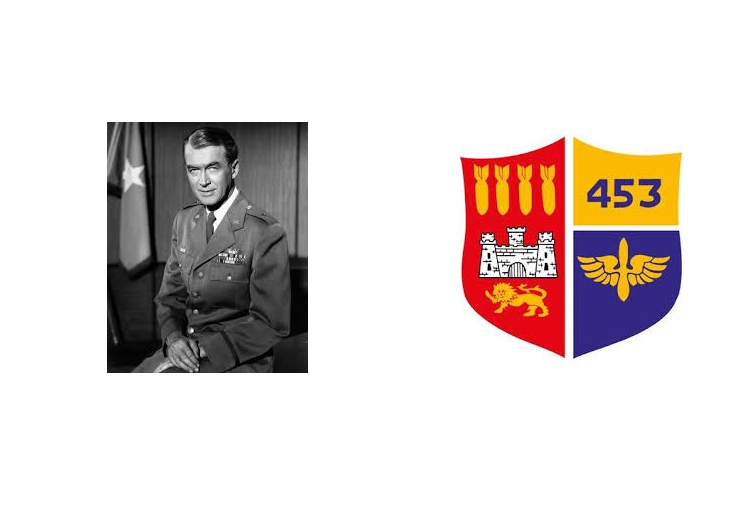
Film star James Stewart was Group Operations Officer from March 31 to July 1, 1944. The actor Walter Matthau also served in the group as a radioman-gunner, rising to the rank of Staff Sergeant.
In February 2015, it was announced that Old Buckenham Airport has applied for permission to build a museum dedicated to the 453rd at their former base in England. The plans are for the erection of two Nissen Huts, one of which will house items described as having the potential to be the largest collection of 453rd Bomb Group memorabilia in existence.
Rackheath Airfield
Five miles north east of Norwich is the old USAAF base of Rackheath at which the 467th Bomb Group were based. The majority of the old airfield now houses an industrial estate, but a few of the old wartime buildings are still standing on the outer edges of the wartime airfield.
The first of the group’s B-24 heavy bombers arrived at Rackheath on 8/3/44. The 467th set an unsurpassed record for bombing accuracy on 15 April 1945, holding the record for the entire Eighth Air Force.
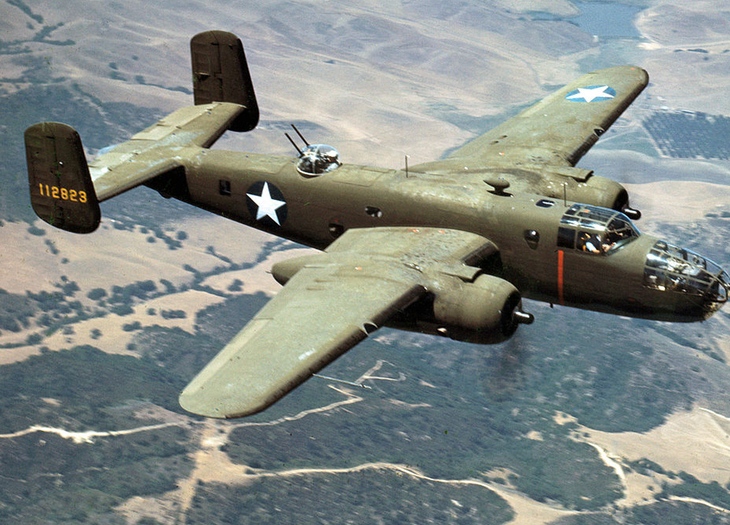
The group commander, Colonel Albert J. Shower, had the distinction of being the only group commander to stay with the same group from beginning to the end of the war. The 467th returned to the United States in July 1945.
Sculthorpe Airfield
Sculthorpe had a somewhat limited association with the USAAF during the war years. In January 1944, 100 Group’s No. 214 Squadron of the RAF moved in with B-17 Flying Fortress aircraft to be joined by crews from the USAAF 96th Bomb Group, also known as the 803rd Bomb Group, moving from RAF Snetterton Heath..
In April/May 1944 the 803rd and 214 Squadron departed for RAF Oulton leaving Sculthorpe standing empty until its redevelopment as a Very Heavy Bomber Base, with the work was not being completed until the spring of 1946. The base is no longer operational although it remained as a USAF base until being deactivated in 1991. Much of the airfield, including military personnel housing was then sold-off, but some sections was retained and designated as ‘official training ground’.
Seething Airfield
If you now drive some 10 miles south-east of Norwich, taking the B1332 Bungay road, you will come across the small village called Kirstead Green. Just to the east if the village is the site of the sold wartime Seething airbase.
Between November 1943 and July 1945 it was the home of the 448th Bomb Group. The last combat mission flown by the groups B-24’s was on 25 April when they attacked a marshalling yard at Salzburg. The majority of the old base has reverted back to farming, but a section, on the eastern edge, is now home to the Waveney Flying Group.
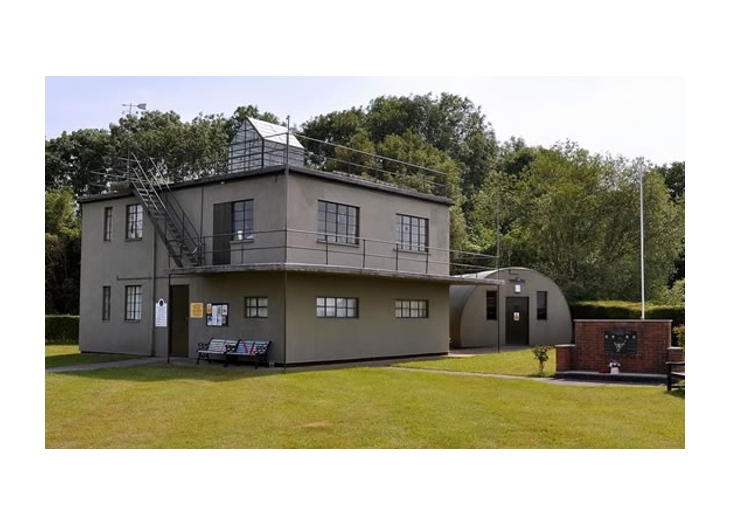
The wartime control tower has been renovated as a ‘memorial museum’ and is open to the public on the first Sunday of each month, from May to October.
Shipdham Airfield
Shipdham is our next destination and has the distinction of being the first heavy bomber base activated in Norfolk. The 44th Bomb Group were in residence between November 1942 and June 1945.
The 44th flew its first combat mission on November 7, 1942, the first of 344 missions flown against the Axis powers in WW II. Over 8,400 individual combat sorties were flown by the 44th. But at the cost of no less than 850 of its brave young airmen who were killed in action. On these many combat omissions the group lost 153 of its B-24's. with 39 planes being lost in non-combat, operational flight-activities. Like Seething the old airfield is now home to a local flying club.
The old wartime control tower still remains in place. There is a small museum, within the flying club‘s premises, which is open on the last Sunday of each month (10am – 4pm), or by special appointment.
Snetterton Heath
The old wartime base of Snetterton Heath was home of two wartime USAAF Bomb Groups. For a few days it hosted the 386th Bomb Group which flew Martin B-26 Marauder medium bombers.
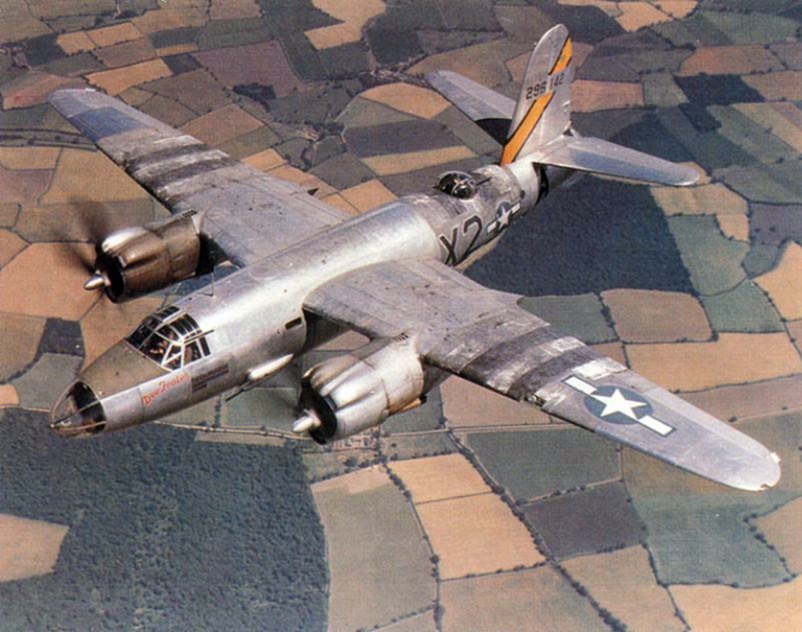
The 96th Bomb Group which arrived at Snetterton Heath in June 1943 and departed in December 1945 flew B-17 Flying Fortress The group completed 321 combat missions, with the loss of 189 aircraft in action along with another 50 lost in accidents. The base was sold off in 1952 and then became a motor racing circuit.
Thorpe Abbotts Airfield
Our next wartime base lies near Diss, some 17 miles south of Norwich on the A140. Thorpe Abbotts was originally designated as a satellite station for the nearby RAF Horham, but in June 1943 the 100th BG, affectionately known as ‘the bloody hundredth’ arrived at Thorpe Abbotts on 8/6/43. Flying the B-17 "Flying Fortress", the 100th would become combat operational beginning June 25, 1943. and on that first mission; three planes and 30 men were lost over Bremen. The average life-expectancy of an 8th Air Force B-17 crewman in 1943 was only eleven missions. The bare wartime statistics of the 100th BG are:-Total missions: 306 ;Total credit sorties: 8,630; Total bomb tonnage: 19,257; 184 missing air-crew reports; 229 planes lost or salvaged; 785 men killed or missing in action and 894 taken as prisoners of war.
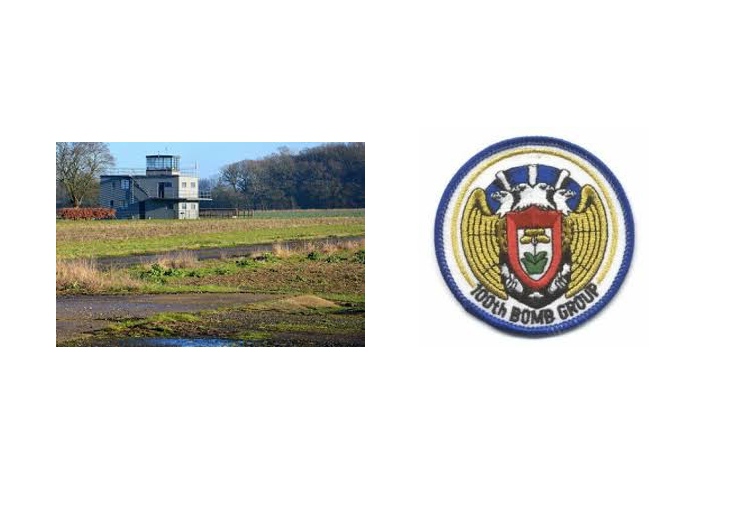
The old control tower has been renovated and is now home to the 100thBG Memorial Museum. (Open from 1 March to 31 October, weekends and bank holidays; from 10am to 5pm. Also open on Wednesdays, May to September,)
Tibenham Airfield
Not too far away, being only just over 7 miles from Diss is Tibenham airfield, which was the wartime home of the 445th Bomb Group, from November 1943 until May 1945. The group flew B24 Liberator heavy bombers. September 27 1944 was deadly one for the 445th Bomb Group. In just over three minutes, 20 B-24’s, with crews of at least 9 men each, went down in a forest in central Germany, resulting in the highest loss in history for a bomb group in a single day. Film star, James Stewart based at Tibenham for a short time, during which he commanded the 703rd Bomb Squadron. The former USAAF base is now home to the Norfolk Gliding Club.
Watton
Just 9 miles south-west of East Dereham is the wartime airbase, Watton, which was the home of both the 3rd Strategic Air Depot and the 25th Bomb Group. Group (Reconnaissance). It was activated in England on 9/8/44 and served with Eighth Air Force until V-E Day, in May 1945. The 25th flew various aircraft, including B-17's, B-24's, B-25's, B-26's, P-38's, and L-5's, but never dropped a bomb, despite being called a bombardment group.
Instead they undertook reconnaissance operations over the waters of the British Isles and, occasionally, the Azores, to collect meteorological data. They also undertook flights over the Continent to glean weather information, essential to the planning of operations. Their night photographic missions were undertaken to detect enemy activity and the daylight photographic and mapping missions over the Continent were essential to aid the war effort. The aircraft of the 25th also dropped “chaff” was spread to confuse enemy radar during Allied attacks. The group left Watton in July 1945.
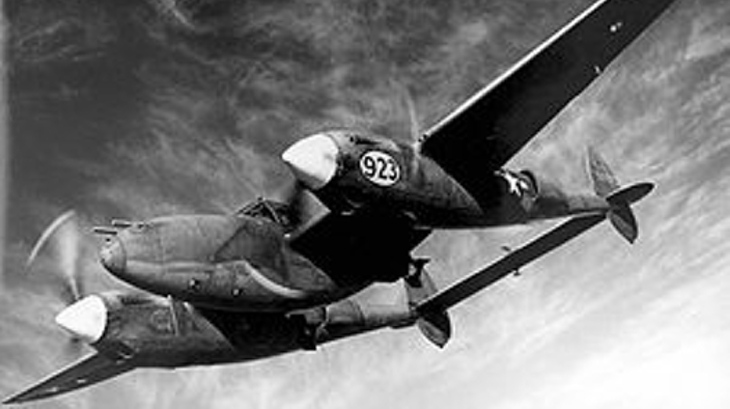
Article written by Ray Cossey, a great enthusiast
Photographs kindly supplied by:
*US roundel 1943-1947" by NiD.29
*359th Fighter Group P-47 Thunderbolts by assumed USAAF - National Archives via the United States Air Force Historical Research Agency
*"RAF Deopham Green - 452d Bombardment Group B-17G 44-8081" by United States Army Air Forces
*"North American Aviation's B-25 medium bomber, Inglewood, Calif" by Sherwood, Mark, photographer.
*"Rackheath control tower" by Graeme Leggett
*"Boeing XB-17 (Model 299)" by U.S. Air Force - Flying Fortress
*Station 146 Tower Association.
*airfield information exchange




